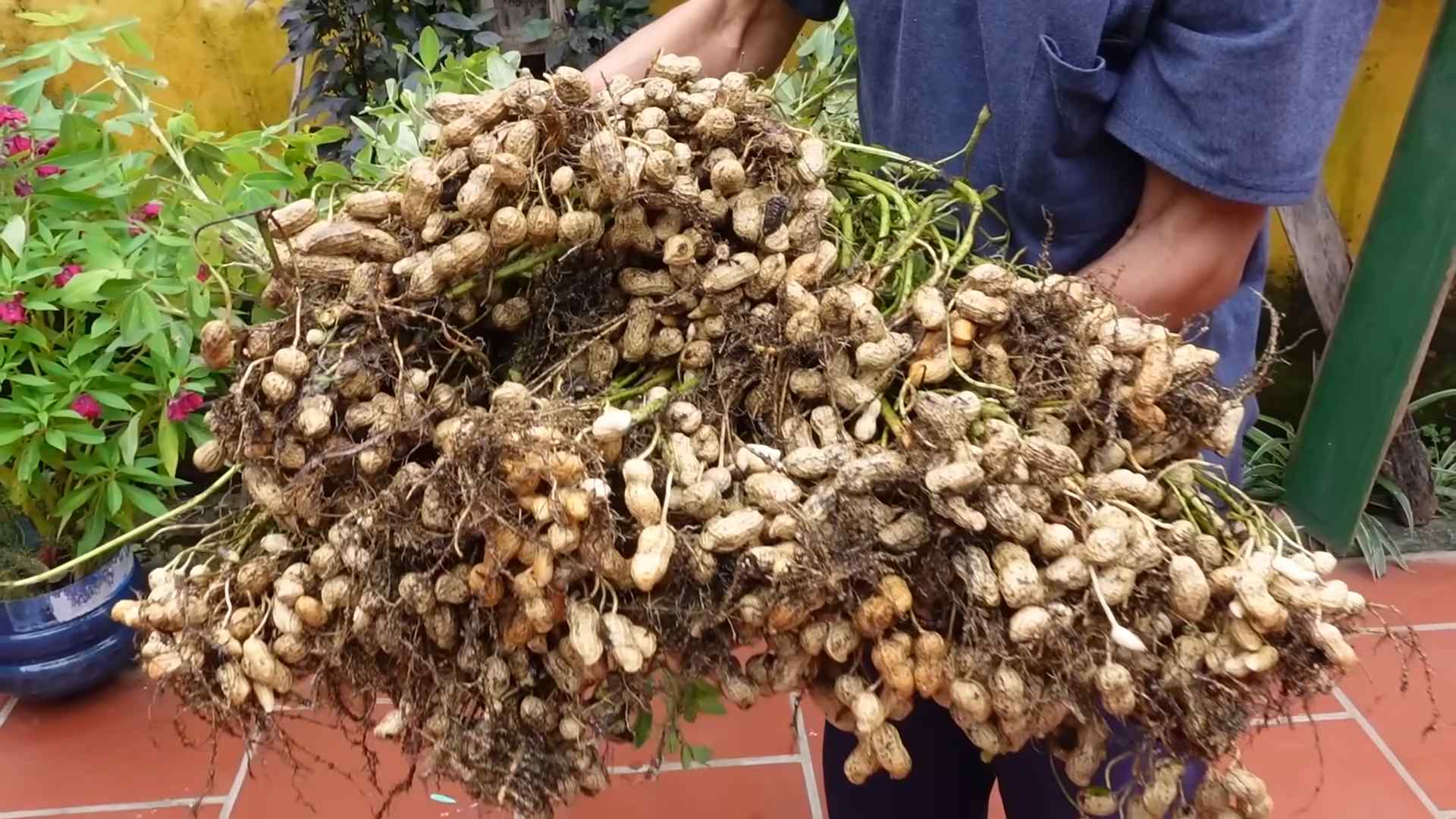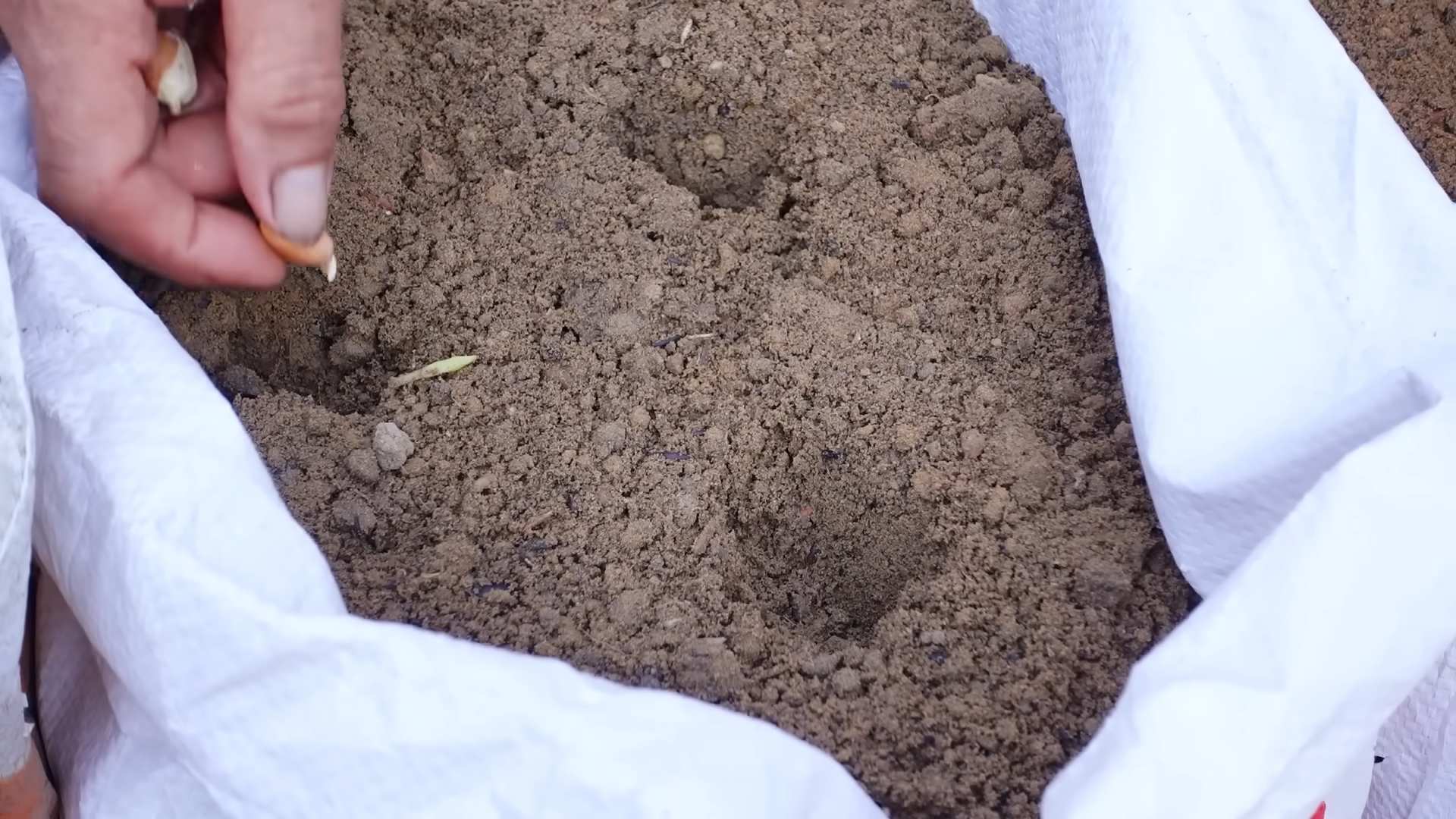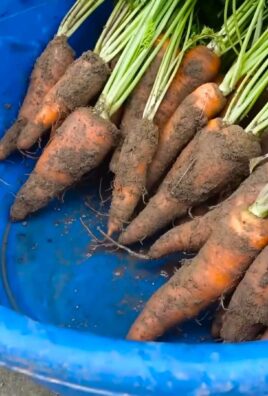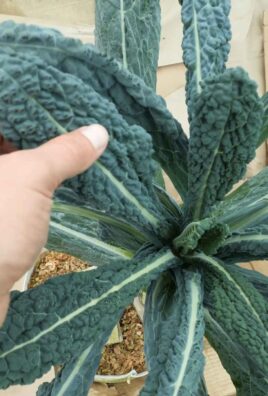Grow peanuts at home? Absolutely! Imagine the satisfaction of harvesting your own homegrown peanuts, ready to be roasted, turned into creamy peanut butter, or simply enjoyed as a healthy snack. It’s easier than you might think, and this DIY guide is here to show you exactly how to do it, even if you have limited space.
Peanuts, also known as groundnuts, have a rich history, dating back thousands of years in South America. They weren’t always a staple crop everywhere; their journey around the world is a fascinating tale of trade and cultural exchange. Now, you can be a part of that story by cultivating your own little peanut patch!
Why should you try this DIY trick? Well, for starters, store-bought peanuts can sometimes be treated with preservatives or grown using methods you might not agree with. Growing your own allows you to control exactly what goes into your food. Plus, it’s a fantastic way to connect with nature, learn about the growing process, and impress your friends and family with your green thumb. I’m excited to share all my tips and tricks to help you grow peanuts at home successfully, from choosing the right variety to harvesting your bounty. Let’s get started!

Growing Peanuts at Home: A Beginner’s Guide
Okay, so you want to grow peanuts at home? Awesome! It’s a surprisingly rewarding experience, and honestly, there’s nothing quite like snacking on peanuts you’ve grown yourself. Don’t be intimidated – it’s easier than you might think. I’m going to walk you through everything you need to know, from choosing the right peanuts to harvesting your bounty. Let’s get started!
Choosing Your Peanuts
First things first, you can’t just grab any old roasted peanuts from the grocery store. Those won’t sprout. You need raw, unsalted peanuts in their shells. Look for them at health food stores, nurseries, or online seed suppliers. Make sure they’re specifically labeled for planting.
* Raw is Key: Roasted peanuts are dead. They won’t germinate.
* Unsalted is Essential: Salt inhibits germination.
* Look for “Seed Peanuts”: These are specifically intended for planting and have a higher germination rate.
* Variety Matters: Different peanut varieties have different growing times and characteristics. Virginia peanuts are large and often used for roasting, while Spanish peanuts are smaller and sweeter. Valencia peanuts have multiple peanuts per shell. Choose a variety that suits your climate and preferences. I personally like Virginia peanuts because they are so big and satisfying!
Preparing for Planting
Before you even think about putting those peanuts in the ground, you need to get your soil ready. Peanuts need well-drained, sandy loam soil. They don’t like heavy clay soil, which can lead to rot.
* Soil Testing: Ideally, you should test your soil’s pH. Peanuts prefer a slightly acidic pH of around 6.0 to 6.5. You can buy a soil testing kit at most garden centers.
* Amendments: If your soil is heavy clay, amend it with plenty of organic matter, such as compost, aged manure, or peat moss. This will improve drainage and aeration. I usually add a generous amount of compost to my peanut patch.
* Sunlight: Peanuts need at least 6-8 hours of direct sunlight per day. Choose a sunny spot in your garden.
* Space: Give your peanut plants plenty of space to grow. They’ll spread out, so plant them about 6-8 inches apart in rows that are 2-3 feet apart.
Planting Your Peanuts
Now for the fun part! Planting your peanuts is pretty straightforward.
1. Soaking the Peanuts (Optional): Some people like to soak their peanuts in water for a few hours before planting to help them germinate faster. I’ve done it both ways, and honestly, I haven’t noticed a huge difference. But if you want to give them a head start, go for it. Just don’t soak them for more than 24 hours, or they might rot.
2. Shelling the Peanuts (Optional): You can plant peanuts in their shells, but they’ll germinate faster if you shell them first. Be careful not to damage the peanut kernels when you shell them. I usually just crack the shell open gently with my fingers.
3. Planting Depth: Plant the peanuts about 1-2 inches deep.
4. Spacing: As I mentioned before, space the peanuts 6-8 inches apart in rows that are 2-3 feet apart.
5. Watering: Water the soil thoroughly after planting. Keep the soil consistently moist, but not waterlogged, until the peanuts germinate.
Caring for Your Peanut Plants
Once your peanut plants start to grow, you’ll need to provide them with regular care.
* Watering: Water your peanut plants regularly, especially during dry spells. They need about 1 inch of water per week. Avoid overhead watering, which can promote fungal diseases.
* Weeding: Keep the area around your peanut plants free of weeds. Weeds compete with the peanuts for nutrients and water. I like to use mulch to suppress weeds.
* Fertilizing: Peanuts are legumes, which means they can fix nitrogen from the air. However, they still benefit from a little fertilizer. Use a fertilizer that’s low in nitrogen and high in phosphorus and potassium. I usually use a balanced fertilizer at half strength.
* Hilling: This is an important step! As your peanut plants grow, they’ll produce “pegs” that grow down from the plant into the soil. These pegs are what develop into peanuts. To encourage peanut production, you need to “hill” the soil around the base of the plants. This means mounding up soil around the stems to cover the pegs. Do this every few weeks as the plants grow.
* Pest Control: Peanuts can be susceptible to pests such as aphids, spider mites, and leafhoppers. Inspect your plants regularly for signs of pests. If you find any, treat them with an appropriate insecticide or insecticidal soap. I prefer to use organic pest control methods whenever possible.
Harvesting Your Peanuts
Harvesting is the most exciting part! You’ll know your peanuts are ready to harvest when the leaves start to turn yellow and the plants begin to die back. This usually happens about 120-150 days after planting, depending on the variety.
1. Digging Up the Plants: Use a garden fork or shovel to carefully dig up the entire plant. Be gentle, as you don’t want to damage the peanuts.
2. Shaking Off the Soil: Shake off as much soil as possible from the plants.
3. Drying the Peanuts: Hang the plants upside down in a dry, well-ventilated place for 2-3 weeks to dry. This is called “curing.” Curing helps to improve the flavor and shelf life of the peanuts. I usually hang mine in my garage.
4. Picking the Peanuts: Once the plants are dry, pick the peanuts off the vines.
5. Washing the Peanuts: Wash the peanuts in clean water to remove any remaining soil.
6. Drying the Peanuts Again: Spread the peanuts out on a screen or tray to dry completely. This may take another week or so.
7. Storing the Peanuts: Store the dried peanuts in an airtight container in a cool, dry place. They should last for several months.
Roasting Your Peanuts
Now that you’ve harvested your peanuts, it’s time to roast them! Roasting peanuts is easy, and it really brings out their flavor.
1. Preheat Your Oven: Preheat your oven to 350 degrees Fahrenheit (175 degrees Celsius).
2. Spread the Peanuts: Spread the peanuts in a single layer on a baking sheet.
3. Roast the Peanuts: Roast the peanuts for 20-25 minutes, or until they’re golden brown and fragrant. Stir them occasionally to ensure even roasting.
4. Cool the Peanuts: Let the peanuts cool completely before eating.
5. Salting (Optional): If you want to salt your peanuts, toss them with salt while they’re still warm.
Troubleshooting
Even with the best planning, things can sometimes go wrong. Here are a few common problems you might encounter when growing peanuts and how to fix them:
* Poor Germination: If your peanuts aren’t germinating, it could be due to several factors:
* Old Seeds: Make sure your peanuts are fresh.
* Cold Soil: Peanuts need warm soil to germinate. Wait until the soil temperature is at least 65 degrees Fahrenheit (18 degrees Celsius) before planting.
* Overwatering: Overwatering can cause the peanuts to rot before they germinate.
* Poor Soil: Make sure your soil is well-drained and not too heavy.
* Yellowing Leaves: Yellowing leaves can be a sign of nutrient deficiency. Try fertilizing your plants with a balanced fertilizer. It could also be a sign of overwatering or poor drainage.
* Small Peanuts: Small peanuts can be caused by insufficient watering or poor soil. Make sure you’re watering your plants regularly and that your soil is rich in nutrients.
* Pest Problems: As mentioned earlier, peanuts can be susceptible to pests. Inspect your plants regularly and treat any infestations promptly.
Enjoying Your Homegrown Peanuts
Congratulations! You’ve successfully grown your own peanuts. Now it’s time to enjoy the fruits (or rather, the nuts) of your labor. Eat them as a snack, use them in recipes, or give them away as gifts. There’s nothing quite like the satisfaction of growing your own food. Happy peanut growing!

Conclusion
So, there you have it! Growing peanuts at home is not only achievable but also a deeply rewarding experience. Forget the store-bought varieties that often lack the freshness and unique flavor profile of homegrown produce. This DIY trick transforms your garden, balcony, or even a sunny windowsill into a miniature peanut farm, providing you with a sustainable source of delicious and nutritious snacks.
Why is this a must-try? Because it connects you to your food in a tangible way. You witness the entire life cycle of the peanut, from the initial planting to the final harvest. It’s an educational experience for the whole family, especially children, teaching them about botany, agriculture, and the importance of sustainable practices. Plus, the taste of freshly harvested, homegrown peanuts is simply unparalleled. The flavor is richer, the texture is more satisfying, and you have the satisfaction of knowing exactly where your food came from.
Beyond the basic method outlined, there’s plenty of room for experimentation. Try different peanut varieties to discover your favorite flavor profile. Valencia peanuts are known for their sweetness, while Virginia peanuts are prized for their large size. Consider companion planting to enhance growth and deter pests. Marigolds, for example, are known to repel nematodes, a common peanut pest. You can also experiment with different soil amendments to optimize drainage and nutrient levels. Adding compost or well-rotted manure can significantly improve your peanut yield.
Don’t be afraid to get creative with your peanut harvest! Roasted peanuts are a classic, but you can also use them to make homemade peanut butter, add them to salads for a crunchy texture, or incorporate them into Asian-inspired dishes. The possibilities are endless.
We wholeheartedly encourage you to give this DIY trick a try. It’s a fun, educational, and ultimately delicious way to connect with nature and enjoy the fruits (or rather, the nuts!) of your labor. Growing peanuts at home is easier than you might think, and the rewards are well worth the effort.
Once you’ve embarked on your peanut-growing adventure, we’d love to hear about your experience! Share your tips, tricks, and triumphs in the comments below. Let us know what varieties you tried, what challenges you faced, and what delicious creations you made with your homegrown peanuts. Your insights can help other aspiring peanut farmers and contribute to a thriving community of DIY gardeners. So, grab your seeds, get your hands dirty, and prepare to enjoy the unique satisfaction of growing your own peanuts!
Frequently Asked Questions (FAQ)
What is the best time of year to plant peanuts?
The ideal time to plant peanuts is after the last frost, when the soil temperature has consistently reached at least 65 degrees Fahrenheit (around 18 degrees Celsius). This typically falls in late spring or early summer, depending on your climate. Peanuts require a long growing season of at least 120-150 days, so planting early enough is crucial for a successful harvest. Check your local weather forecasts and historical data to determine the best planting window for your region. Planting too early can result in poor germination and stunted growth, while planting too late may not allow enough time for the peanuts to mature fully.
What kind of soil is best for growing peanuts?
Peanuts thrive in well-drained, sandy loam soil. This type of soil allows for good aeration and drainage, which is essential for healthy root development and prevents the peanuts from rotting. Avoid heavy clay soils, as they tend to retain too much moisture and can hinder the formation of peanut pods. If you have clay soil, you can amend it with organic matter, such as compost or peat moss, to improve drainage and aeration. The ideal soil pH for peanuts is between 6.0 and 6.5. You can test your soil pH using a home testing kit or by sending a sample to a local agricultural extension office. If your soil is too acidic, you can add lime to raise the pH.
How much sunlight do peanuts need?
Peanuts require at least 6-8 hours of direct sunlight per day to thrive. Choose a planting location that receives ample sunlight throughout the day. If you are growing peanuts indoors, place them near a sunny window or use grow lights to supplement natural sunlight. Insufficient sunlight can lead to weak, leggy growth and reduced peanut production.
How often should I water my peanut plants?
Peanuts need consistent moisture, especially during the flowering and pegging stages. Water deeply and regularly, ensuring that the soil remains consistently moist but not waterlogged. Avoid overhead watering, as this can promote fungal diseases. Instead, water at the base of the plants. During periods of drought, you may need to water more frequently. Monitor the soil moisture levels regularly and adjust your watering schedule accordingly.
How do I know when my peanuts are ready to harvest?
The best way to determine when your peanuts are ready to harvest is to check the maturity of the pods. Approximately 120-150 days after planting, dig up a few plants and examine the pods. The pods should be plump and well-filled, with a distinct veining pattern on the shell. The inside of the shell should be dark in color. If the pods are still small and immature, wait a few more weeks and check again. Another indicator is the yellowing of the foliage. As the peanuts mature, the leaves will begin to turn yellow and brown.
What are some common pests and diseases that affect peanuts?
Peanuts can be susceptible to various pests and diseases, including nematodes, aphids, spider mites, leaf spot, and peanut rust. To prevent pest and disease problems, practice good garden hygiene, such as removing weeds and debris from around the plants. You can also use organic pest control methods, such as insecticidal soap or neem oil, to control aphids and spider mites. To prevent fungal diseases, ensure good air circulation around the plants and avoid overhead watering. If you notice signs of disease, remove the affected leaves or plants immediately.
Can I grow peanuts in containers?
Yes, peanuts can be successfully grown in containers, provided that you choose a large enough container and use a well-draining potting mix. A container that is at least 18 inches in diameter and 12 inches deep is recommended. Make sure the container has drainage holes to prevent waterlogging. Use a high-quality potting mix that is specifically formulated for container gardening. Water regularly and fertilize every few weeks with a balanced fertilizer.
How do I cure and store my peanuts after harvesting?
After harvesting, cure your peanuts by drying them in a well-ventilated area for several weeks. Spread the peanuts out in a single layer on a screen or rack and allow them to air dry until the shells are completely dry and brittle. Once the peanuts are cured, you can store them in an airtight container in a cool, dry place. Properly cured and stored peanuts can last for several months. You can also freeze peanuts for longer storage.




Leave a Comment